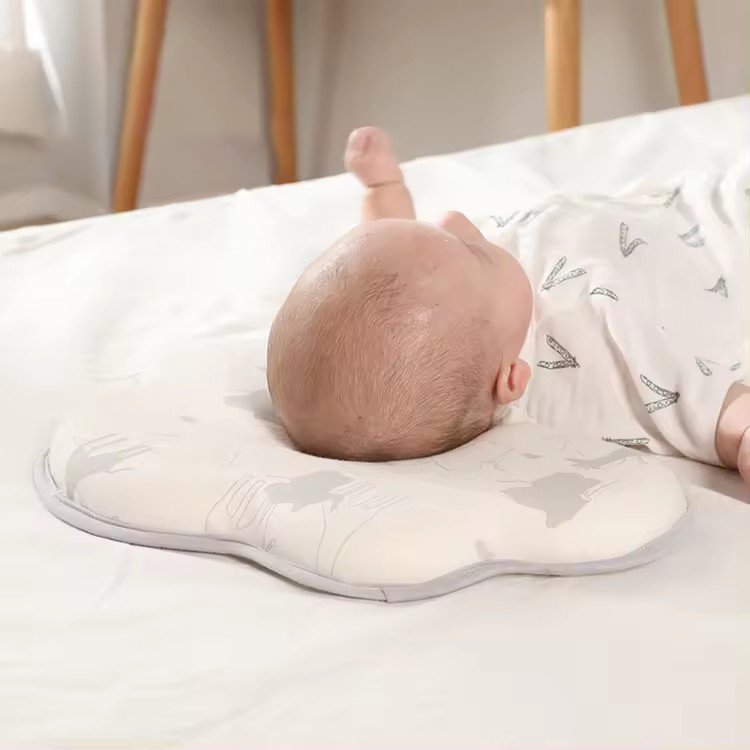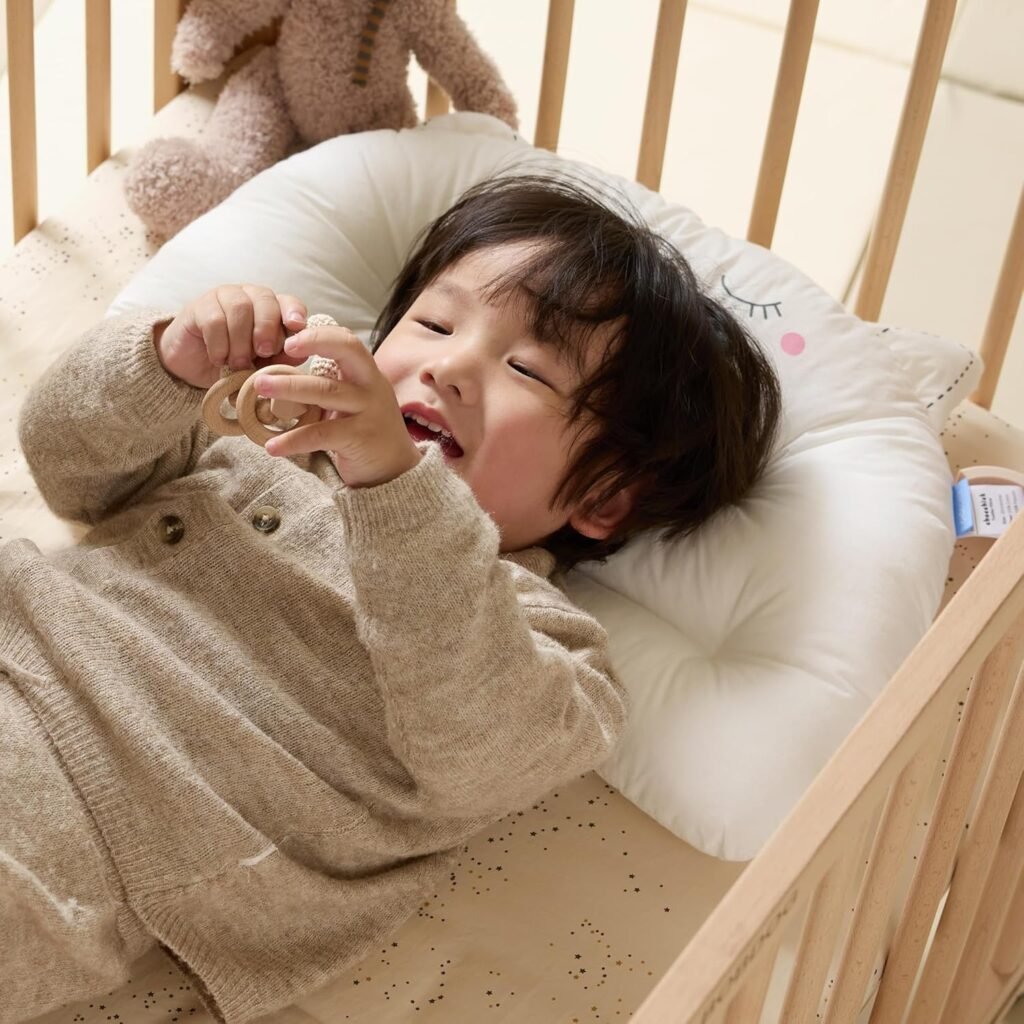Finding the best toddler pillow can feel like a bigger deal than it should. After all, how hard can picking a small pillow be, right? But when your little one finally transitions from crib to toddler bed, what they sleep on matters more than you think. Let’s break it all down together—no fluff (pun intended), just real info from one parent to another.
Table of Contents
- Why Your Toddler Needs a Pillow
- What Makes a Toddler Pillow “The Best”?
- Types of Toddler Pillows
- Top Features to Look For
- Common Mistakes Parents Make When Buying a Toddler Pillow
- Expert-Recommended Pillow Brands (2025 Picks)
- How to Introduce a Pillow to Your Toddler
- Cleaning and Caring Tips
- When to Replace Your Toddler’s Pillow
- Final Thoughts
- FAQs
- Share This Case:
Why Your Toddler Needs a Pillow
The Transition from Baby to Toddler
Before age 2, pediatricians usually recommend no pillows—flat, firm mattresses are safer for infants. But once your baby hits toddlerhood, things change. Their bodies are growing fast, and so is their need for proper support while they sleep.
Benefits of Using a Toddler-Sized Pillow
A pillow made just for toddlers:
- Supports neck and spine alignment
- Helps them sleep longer and better
- Makes them feel more “grown-up” (great for transitioning to a big-kid bed)
- Adds cozy comfort that encourages independent sleeping
What Makes a Toddler Pillow “The Best”?
Safety First: Toddler-Safe Materials
Look for OEKO-TEX certified or GOTS organic labels. These ensure the pillow is free from harmful chemicals—because your toddler will chew on it at some point (yep, it’s a thing).
Size and Firmness
A good toddler pillow measures around 13 x 18 inches. It should be soft enough to be comfy but firm enough to hold shape and give gentle support. Think marshmallow with structure—not a flat pancake or a stiff board.
Hypoallergenic and Easy to Clean
Kids = mess. Allergies, dust mites, and snack crumbs are common, so hypoallergenic materials and machine-washable covers are lifesavers.
Breathability and Temperature Regulation
Toddlers run hot at night. A breathable cotton cover and temperature-regulating fill can prevent sweaty wakeups (and soggy morning hair).
Types of Toddler Pillows
Memory Foam vs. Cotton vs. Polyester Fill
- Memory Foam: Supportive but may feel too firm or retain heat.
- Cotton Fill: Natural, breathable, soft—good for most toddlers.
- Polyester Fill: Budget-friendly, hypoallergenic, but may flatten quicker.

Memory Foam Infant Head Shaping Pillow
Washable 100% Cotton Memory Foam Cute Infant Head Shaping Pillow For Newborn Baby
Features
- Integrated memory cotton
- Multi color and pattrn
- Suitable for newborns
- Pillowcase can be removed for cleaning
- Helps shape the head
Organic Toddler Pillows
These are perfect for eco-conscious parents. Usually filled with organic cotton or wool, they’re a little pricier but super safe and chemical-free.

Animal Shape Organic Pillow for Toddler
Washable Soft Hypoallergenic Kids Toddler Pillows,100% Cotton Pillowcase
Features
- No zipper security design
- Breathable quality filling
- Cute pillowcase
- Machine washable
- Skin friendly 100% cotton fabric
Travel-Friendly Pillows
A must-have if you’re on the go. Compact and portable designs can make long car rides or plane naps much smoother.

Moon Shape Kids Pillow
Curve Long Toddler Kids Body Pillow for Sleeping, 100% Organic Cotton Pillow case, Washable Breathable Crib Toddler Pillows
Features
- Made By Quality Filling fiber
- Perfect for Boys and Girls Over 2 years old.
- 100% Organic Cotton Fabric
- Body Pillow Size : 34 X 27X 4inches.
- Safe Design with No Zipper
Top Features to Look For
Machine Washability
Your toddler will drool, sneeze, or spill something on it. Trust us—you want one that can go straight into the wash.
Ergonomic Support
A slightly curved or contoured design can support neck alignment better than a flat pillow.
Durability and Stitch Quality
Poor stitching = ripped seams = sad pillow. Strong seams and tight stitching make a difference long-term.
Common Mistakes Parents Make When Buying a Toddler Pillow
Choosing the Wrong Size
Oversized pillows can strain your toddler’s neck. Stick with age-appropriate sizes to avoid this common trap.
Prioritizing Design Over Function
Cute dinosaur prints are fun, but comfort and support should always win. You can always buy a fun pillowcase!
Ignoring Material Certifications
Just because it’s labeled “baby-safe” doesn’t mean it actually is. Look for GOTS, OEKO-TEX, or CertiPUR-US certifications.
Expert-Recommended Pillow Brands (2025 Picks)
Little Sleepy Head
Made in the USA, 100% hypoallergenic cotton, and comes in fun kid prints. Great balance of soft and supportive.
Coop Home Goods Toddler Pillow
Adjustable fill lets you customize firmness. CertiPUR-US certified memory foam + microfiber combo.
KeaBabies Toddler Pillow
One of the most affordable organic options. Comes with a machine-washable pillowcase and great for sensitive skin.
How to Introduce a Pillow to Your Toddler
Watch for Readiness Signs
If your toddler starts using stuffed animals or blankets as makeshift pillows, that’s a sign they’re ready.
Start with Nap Time
Let them get used to the pillow during naps first. It’s a smaller window, and if it doesn’t go well, no harm done.
Monitor Their Sleep Pattern
Keep an eye on their sleep quality. If they seem restless, the pillow might be too firm, too soft, or too big.
Cleaning and Caring Tips
Pillowcases Matter
Use a tightly woven, breathable cotton case. Bonus points for ones with zipper closures to avoid bunching.
Spot Cleaning vs. Full Wash
Some pillows allow full machine washes; others need gentle spot cleaning. Always read the care label.
When to Replace Your Toddler’s Pillow
Signs of Wear and Tear
Flat spots, uneven lumps, or a weird smell? Time to toss it and get a new one.
Growth Spurts and Neck Support Changes
As your toddler grows, they may need more support. Most kids outgrow their toddler pillow by age 5.
Final Thoughts
Choosing the best toddler pillow isn’t just about comfort—it’s about supporting your child’s growing body, creating healthy sleep habits, and making bedtime something they look forward to. With the right size, material, and features, the perfect pillow becomes more than just a sleep accessory—it’s their new best snuggle buddy.
So go ahead, make the switch from crib to cushy comfort. Your toddler (and your sleep-deprived self) will thank you.
FAQs
Q1: What age should I give my toddler a pillow?
A: Most kids are ready for a toddler pillow between 18–24 months, but always check with your pediatrician.
Q2: How thick should a toddler pillow be?
A: Around 2–3 inches. Just enough to support the neck without tilting the head too far forward.
Q3: Can I use a regular adult pillow for my toddler?
A: Nope. They’re too big and soft, which can cause neck strain or even be a suffocation risk.
Q4: Are memory foam toddler pillows safe?
A: They can be, but make sure it’s CertiPUR-US certified and doesn’t retain too much heat.
Q5: How often should I wash my toddler’s pillow?
A: Wash the pillowcase weekly, and the pillow itself every 1–2 months unless otherwise needed.



